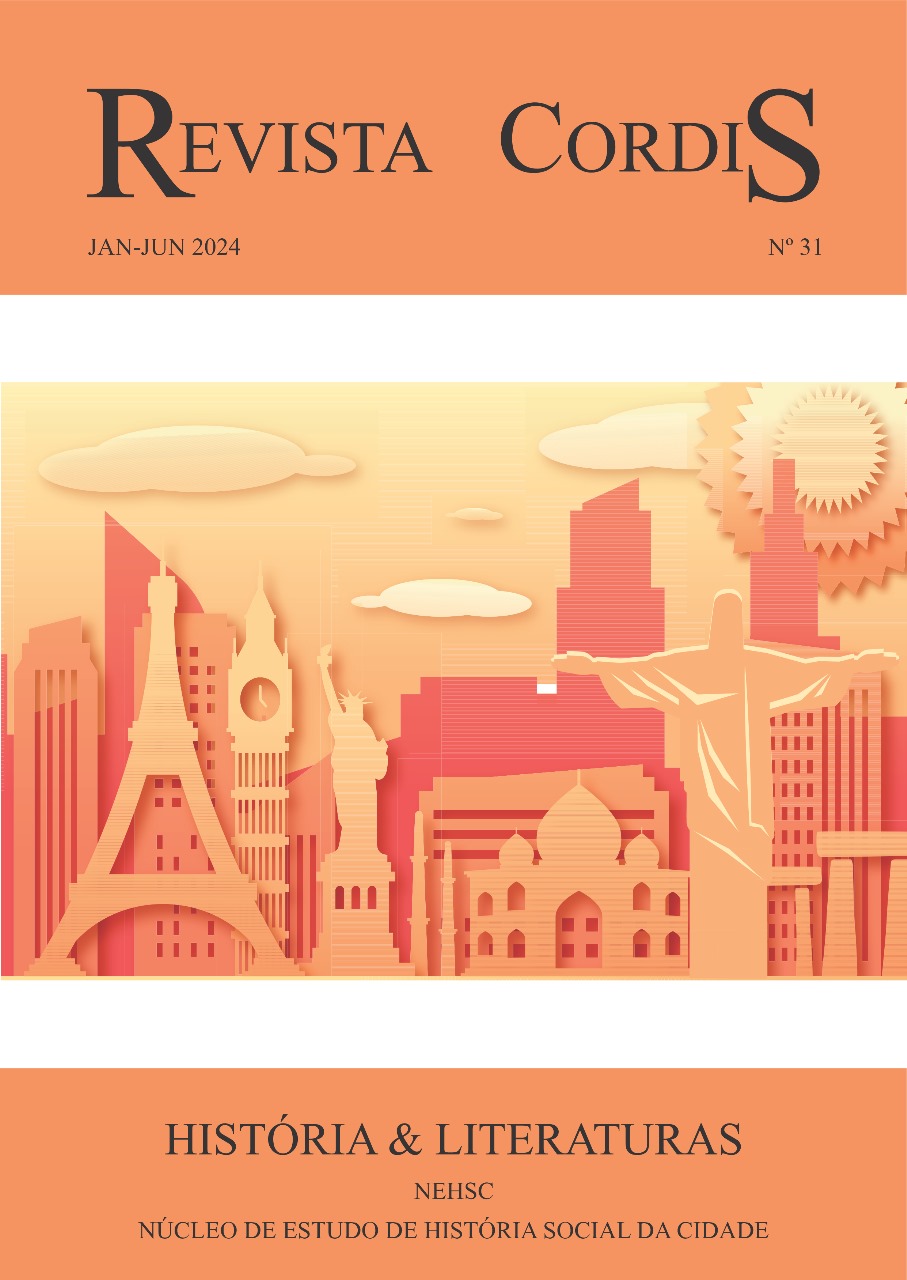Deusas e mulheres nos epigramas amorosos de Rufino
DOI:
https://doi.org/10.23925/2176-4174.v1.2024e66998Parole chiave:
Rufino, Epigrama, Antologia platina, Tradução de poesia, VariatoAbstract
Este é um breve estudo de alguns epigramas de amor do quinto livro da assim chamada “Antologia Palatina”, especialmente os poemas em que Rufino, um dos poetas mais profícuos (embora pouco conhecido) daquela antologia, contrasta e compara suas musas com as deusas. Para isso, recorre-se a uma metodologia comparativa em que, após uma breve introdução ao epigrama como forma literária e ao quinto livro da “Antologia Palatina”, oferece-se a tradução dos oito poemas de Rufino (que é um representante ideal da variedade de temas e do tratamento dado ao amor na Antologia Palatina) em que ocorre a justaposição de figuras femininas, quer envolvendo deusas, quer não. Afrodite e Palas Atena são o principal objeto de comparação, explícita ou implícita. A análise aponta para a óbvia conclusão de que o poeta recorria a esse artifício quando queria exaltar certas qualidades de suas musas, mas revela também que o teor das comparações nem sempre é cavalheiresco.
Riferimenti bibliografici
CAMERON, Alan. The Greek anthology: from Meleager to Planudes. Oxford: Clarendon, 1993.
CLACK, Jerry. Asclepiades of Samos and Leonidas of Tarentum: the poems. Wauconda, ILL: Bolchazy-Carducci, 1999.
FAIN, Gordon L. Ancient Greek epigrams: major poets in verse translation. Berkeley: UCP, 2010.
FRIEDLÄNDER, Paul; HOFFLEIT, Herbert B. Epigrammata: Greek inscriptions in verse from the beginnings to the Persian wars. Berkeley: UCP, 1948.
GARRISON, Daniel H. Mild frenzy: a reading of the Hellenistic love epigram. Wiesbaden: Steiner, 1978.
GOLDHILL, Simon. Amor, sexo & tragédia: como gregos e romanos influenciam nossas vidas até hoje. Tradução: Cláudio Bardella. Rio de Janeiro: Zahar, 2007.
GUICHARD, Luis A. Asclepíades de Samos: epigramas y fragmentos. Bern et al.: Peter Lang, 2004.
GUTZWILLER, Kathryn J. The paradox of amatory epigram. In: BING, Peter; BRUSS, Jon Steffen (Eds.). Brill’s companion to Hellenistic epigram: down to Philip. Leiden: Brill, 2007. p. 313-332.
GUTZWILLER, Kathryn J. (Ed.). Poetic garlands: Hellenistic epigrams in context. Berkeley: UCP, 1998.
GUTZWILLER, Kathryn J. Introduction. In: GUTZWILLER, Kathryn J. (Ed.). The new Posidippus: a Hellenistic poetry book. Oxford: OUP, 2005. p. 1-16.
JAY, Peter. The Greek anthology and other ancient Greek epigrams. London: Penguin, 1973.
MACKAIL, J. W. Select epigrams from the Greek anthology edited with a revised text, translation, and notes. London & New York: Longmans, Green & Co., 1890.
PATON, W. R. The Greek anthology. London: Putnam’s, 1920.
PAGE, Denys L. The epigrams of Rufinus edited with an introduction and commentary. London: CUP, 1978.
PERRY, B. E. Secundus the silent philosopher. Ithaca, NY: American Philological Association, 1964. p. 68-78.
SENS, Alexander. Asclepiades of Samos: epigrams and fragments. Oxford: OUP, 2011.
SIDER, David. The epigrams of Philodemos: introduction, text, and commentary. Oxford: OUP, 1997.
SKELTON, Robin. Two hundred poems from the Greek anthology. Toronto: McClelland & Stewart, 1971.
SMALL, Stuart G. P. The epigrams of Marcus Argentarius: introduction, revised text, commentary. Adviser: Rodney P. Robinson. 1942. 152 p. Thesis (Doctor of Philosophy) – University of Cincinnati, Cincinnati, 1942.
TARÁN, Sonya L. The art of variation in the Hellenistic epigram. Leiden: Brill, 1979.
Downloads
Pubblicato
Come citare
Fascicolo
Sezione
Licenza
Copyright (c) 2024 Milton Luiz Torres

TQuesto lavoro è fornito con la licenza Creative Commons Attribuzione 4.0 Internazionale.



